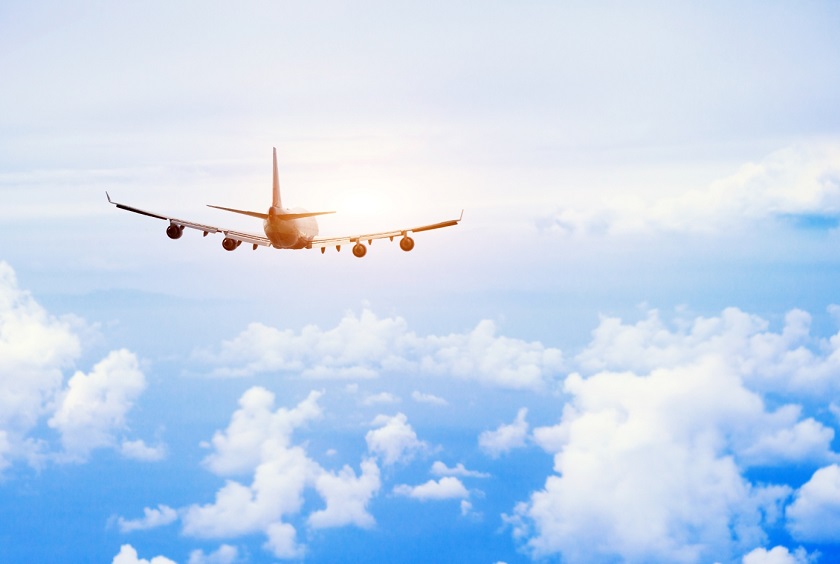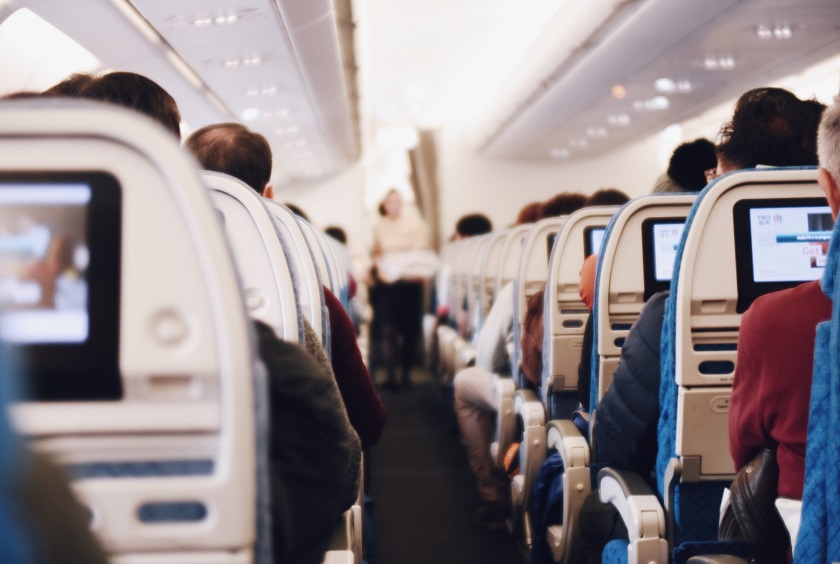10 Tips to overcome your fear of flying

Going on holiday should be one of the most relaxing experiences there is. You’ve time to unwind, are about to explore new parts of the world and are going to have fun. However, for some travellers the idea of going on holiday is a stressful and anxious experience in itself. Fear of flying affects millions of people and sometimes even prevents people from flying at all. However, there are ways to reduce and even overcome a fear of flying which we’ll share with you below.
1. Familiarise yourself with the facts
Fear is fed by catastrophic and ‘what if’ thoughts. To reduce these, it’s important to familiarise yourself with facts about flying. Statistics have proven that flying is one of the safest ways to travel. Another important fact to remember is that aircrafts are built for turbulence, and most of the turbulence that passengers encounter is much less than planes can actually withstand. Remembering these and other facts will not eliminate the fear of flying completely, but will help manage the stress and anxiety that come with it.
2. Prepare well for your trip
Make sure that you prepare well for your trip by downloading mindfulness apps, your favourite music, films and TV series, or bring a book to read. Pack a head pillow, earplugs and an eye mask to reduce noise and to create a calming environment during the flight. Anything that can distract you from your anxiety is good to include while planning and packing for your trip. Also make sure to arrive at the airport early, have your passport and boarding passes ready and make sure to remove any liquids from your hand luggage when you enter security. This gives you enough time to relax at the airport, and helps to avoid any unnecessary stress that can worsen your fear of flying.

3. Choose your seat
Do you feel more comfortable sitting in a window, middle or aisle seat? Most airlines nowadays offer the option to choose your seat in advance of your flight, so make sure to book the one that you feel most comfortable in. In certain cases it’s worth upgrading to Business or First Class, as feeling physically more comfortable can make you feel emotionally more comfortable as well. In addition, turbulence can usually be felt more in the back of the plane, so try to get a seat as close to the front of the plane as possible.
4. Avoid drinking coffee, energy drinks and alcohol before and during the flight
Coffee and energy drinks can intensify flying nerves. The effect of caffeine can take around five to six hours to wear off, so try to avoid it before your flight. Some therapists even advise to avoid caffeine on the day of the flight, as well as the day before. When it comes to alcohol, a drink can calm your nerves, but the effect is only temporary and when it wears off it may have the opposite effect of what you’re trying to achieve.
5. Eat little and often
In order to keep your blood sugar level during the flight, it’s important not to eat too much before and during the flight. Instead, try eating little and often. It’s crucial to have a light snack handy at all times and to order some fruit juice from time to time to help with this. Also make sure to drink plenty of water to keep yourself hydrated before and during the flight.
6. Inform the flight attendant and talk to your fellow passengers
Flight attendants deal with nervous and anxious fliers every day. They’re trained to deal with this, and their job is to make their passengers feel comfortable. Therefore, it’s important to inform them about your fear of flying, as they might be able to provide you with useful tips they’ve learned through experience. They will also check in on you more often to see if you’re alright. Vocalising your fears, whether it’s to your travel partner(s) or to a flight attendant, can be a huge help and make the flight a more comfortable experience.
7. Learn some basic breathing exercises
As nervousness and anxiety increase, breathing might get shallow. In these cases it’s important to focus on your breathing; breathe in deeply and slowly for a count of five through your nose and breathe out again through your mouth. Repeat this process until you feel calmer and your breathing returns to normal. If you know what your trigger points are (e.g. take-off, turbulence or landing), start focusing on your breathing when these events occur. Sometimes it can help to hold the hand of your partner, if you travel together, while doing these breathing exercises.

8. Distract yourself during a flight
Do whatever is needed to distract yourself from your anxiety. Watch a film, listen to music or talk to fellow passengers. Solve a crossword puzzle, read a book or take a nap. Anything that keeps your mind occupied and distracted. When you’re on a long flight, try to distract yourself by getting up and going for a walk every half an hour or so. This can combat the sense of claustrophobia you might be experiencing, and the minor exercise is great for lowering anxiety levels as well.
9. Distinguish between danger and fear and focus on the destination rather than the journey
While our bodies react in the same way to danger as they do to fear, it’s important to recognise that even though you're frightened of flying, you're actually not in danger. A distraction method that often helps is thinking about the destination, instead of focusing on the journey. Try to sum up what you’ll be doing when you get there, and how being on holiday makes you feel.
10. Take a fear of flying course
Several airlines offer fear of flying programmes that aim to tackle the phobia in an effective way, by offering courses given by pilots, cabin crew and supported by clinical psychologists. Information sessions, workshops and flight simulations are a few examples of services included in these courses. Both British Airways and Virgin Atlantic offer fear of flying courses in different airports around the United Kingdom. Air France organises sessions at their Air France Pilot Training Centres at the Paris-Charles de Gaulle and Paris-Orly airports.
Tailor-made holidays
Flexible, custom-made holidays to Latin America created to match your exact requirements: our tailor-made itineraries are as unique as the clients for whom they are designed.
Design my tripPapagaio
Your edit for Latin American inspiration
Our exciting range of articles on Latin America explore everything from iconic destinations and lesser-known cultural gems to delicious traditional recipes. You’ll also find exclusive travel tips, first-hand client reviews and the chance to get your personal questions answered by our travel experts.
View Extraordinary Inspiration






































